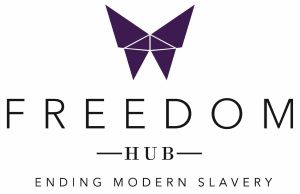Material Traceability and Modern-Day Slavery
Where Do You Actually Get Your Products From?
From having a cup of water in the morning to brushing your hair out, mindlessly using products has become essential to our everyday lives. However, have you ever stopped to wonder where that cup or hairbrush came from? And no, I’m not talking about whether you bought it from Kmart or Coles, not even if it’s made out of plastic or glass. I really want you to trace back to the origins of the raw materials of the products. Which sand and limestone lots did the materials come from to make the glass that later becomes your everyday cup? Importantly, who helps extract those materials?
Why Does It Matter?
Material traceability refers to the ability to track the origins and movement of materials and products throughout the supply chain. This involves identifying and documenting the source of raw materials, as well as the processes used to transform them into finished products. Material traceability can help identify whether the foundations of a production and supply chain are rooted in ethical business practices free of modern-day slavery. However, because many raw materials are not directly supplied from a tier-one source, both companies and consumers have difficulty with supply chain visibility. Consequently, the exploitation of workers is often gone undetected.
For example, according to the Australian Council of Superannuation Investors (ACSI Report),” Australian companies often source raw building materials from Asia, from countries considered high risk for modern-day slavery […] Bricks, cement, granite, rubber, and timber have been found to be produced by child and forced labour.”
Consumer Awareness
- Look for certifications: Some third-party certifications, such as Fairtrade, GOTS, or the Responsible Wool Standard, require traceability throughout the supply chain. Look for products with these certifications to ensure they have been produced in an ethical and transparent manner.
- Check the brand’s website: Many fashion brands are now providing information on their website about their supply chain and sustainability practices. Look for information on the origin of materials and the supply chain processes used.
- Ask questions: Don’t be afraid to ask questions about the brand or retailer you are buying from. Contact the brand’s customer service department or ask in-store staff about their material traceability practices.
- Support transparency initiatives: Some organizations and initiatives, such as Fashion Revolution or the Transparency Pledge, are working to promote transparency and traceability in the fashion industry. By supporting these initiatives, consumers can encourage brands to be more transparent about their practices.
Shop Consciously!
- Take a look at the Australian Government’s Online Register for Modern Slavery Statements
- to see which companies are complying with the Modern Day Slavery Act!
- Shop locally and from small businesses, when possible, to know your brands!
- Support the Freedom Hub by shopping at our Ethical Store to buy ethically made, quality products while assisting survivors of modern-day slavery!
Join our Community
Help raise awareness and join a local volunteer team, contact us here.
Or, if you would like to get our monthly update, opt-in here.
If you would like to support a survivor, donate here. (Tax-deductible)
Thank you for taking the time to read our blog – Material Traceability and Modern-Day Slavery (Please review it or share it with others.)




